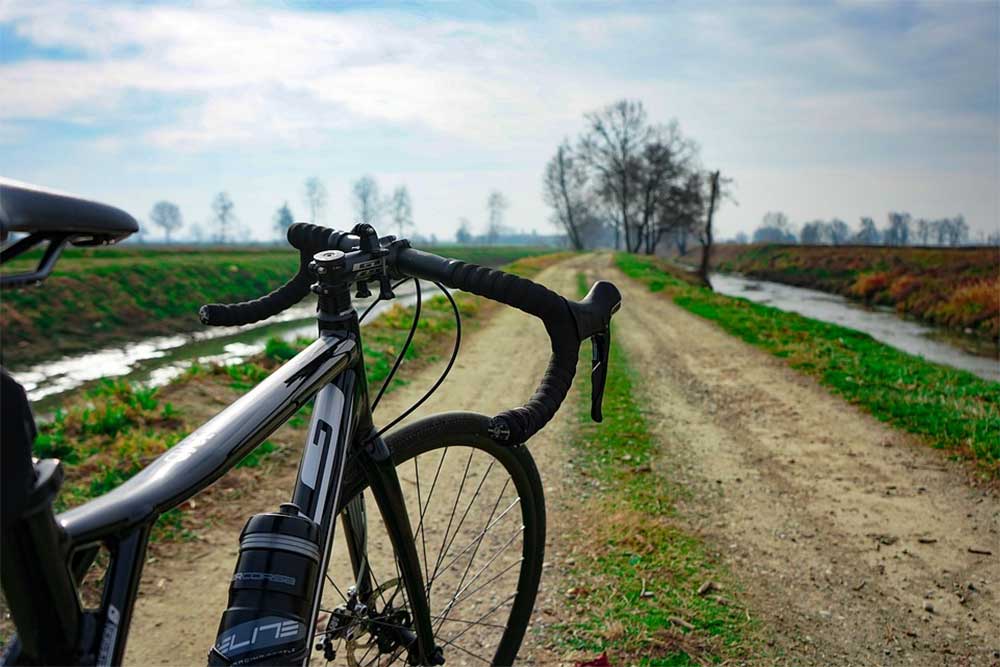To know if a bike is any good, you need to test it against every type of terrain that you can, and that's what we did with the Salsa Journeyman. The Journeyman is advertised as a gravel bike, so with this information alone, we should be riding this Salsa off road with confidence! But is that what we found when we took the Salsa for a spin? There is too much going on to give you a real understanding of the Journeyman in a one-liner.
But if that’s really what you need then scroll down to the conclusion. If you want to know the details of the Salsa and how we found the experience then have a look at each section of this review to see if the Journeyman is right for you. I don’t want to tarnish your views already, but I will say this, within a couple of hours my first ride the derailleur broke, so my opinion of the Salsa Journey was already tainted from the get go!
Let’s not judge the Salsa too harshly yet, there is a lot to unpack with this bike!

Overview
We tested this bike on roads, gravel tracks, muddy roads, and propper off roading locations (those wonderful private areas with no tracks at all), and we did this to really see how the Salsa Journeyman can handle each of the environments.
Before I get into how they did, let’s have a little look at the bike overall. The Salsa Journeyman is an entry level bike. It’s a bike that wants to encourage riders to take the “B” roads and follow the neglected paths. The best bikes for these types of roads are Warbirds or Cutthroats, but these are expensive and should only be bought if you already are a serious gravel road biker. If you’re just starting out, and don’t want to spend a fortune, then the Salsa Journeyman is a great place to start.
You can buy the bike with either a flat bar or a drop bar depending on your needs. Flat bars are great for control and riding with a backpack, drop bars are best for speed and comfort. Although the choice is yours, it's safe to say that a flat bar is better for off roading.
The Salsa Journeyman is a super lightweight bike, especially for its price (around 25.5 pounds in weight). This isn’t ridiculously light and if you compare it to the more high end brands, you might even think it is heavy, but for the Journeyman’s price tag this was an excellent surprise. This lightness is due to the aluminum material of the frame.
Now you’ve read the boring but important stuff, let’s get to how the bikes performed. First, we will start with both gravel roads and mud tracks.
Off Roading - Gravel Roads
The Salsa Journeyman calls itself a gravel bike, and I couldn’t agree more. The bike felt at home on a dirt road which has a little grit. This is probably due to the wide tires, measuring 2.1 inches.
These tires aren’t as wide as you’d expected for a mud track, but we will get to that later. The wide tires reduce the number of vibrations you get in the biking frame, making the journey more comfortable than a thinner bike.
Another point for a good gravel bike is how long the wheelbase is. The Journeyman has a relatively long wheelbase which makes it perfect for handling the unstable ground of a gravel track. This is important because dirt roads aren’t practicable.
Even if you have ridden down a dirt track multiple times, you need to be able to swerve and turn at a moment's notice. The long wheelbase helps you keep stable when those rocky moments come, so you can stay on your bike and enjoy the rush of a good save.
Gravel roads often lead to mountain terrain (depending on where you live), and that's where I took this bike for a spin. This is where you’ll find the first real negative in my review, as mountain terrain needs to have multiple gear settings to help it climb up the inclines.
The Salsa Journey has kept it simple with just a 1 x 11 speed setup. This meant that even on the easiest gear, I found the journey harder than it should have been and often ended up spinning out. If your gravel roads don’t have high inclines, then this is nothing to worry about. But if you’re like me, you might want a gravel bike with a little more range.
Off Road - Mud Tracks
You might be thinking that because the salsa journey is a gravel bike and not a mountain bike, then it makes sense that the bike couldn’t handle the terrain, but most of us want to have a bike that can do it all. If you are one of these people, then I need to show you just how great or bad the bike is in other settings.
Do you remember when I told you how the derailleur broke within the hour? Well, now it's time for the full story. After that mountain terrain, I decided to take the bike to a more muddy location. With a 2.1 inch wide tire, I should have known better, but we do what we have to do for science.
After about half a mile, the mud had done its damage to the rear derailleur causing it to snap in half. It built upon my tires and started to solidify around the chain. This is not necessarily a Salsa Journeyman problem, but a gravel bike problem as a whole. The chain is too close to the tires, so any splashback clogs up the chain and the derailleur very quickly. A replacement was needed, which isn’t what you want on a fun mud biking adventure.
I would not recommend taking the Salsa Journey on a muddy track.
When the bike was fixed, I took it out again on a pathless grassy ride. The Salsa Journey handled it much better than I expected, considering the mud incident. The bike could have done better with a thicker tire, but it rode smoothly and the tall grass didn’t catch.
On Road
Now we are headed to the “on road” part of the review, you might be thinking that I wouldn’t recommend the Salsa Journey for this part either, but actually, it did a good job. That is not to say that it was perfect though. Where the wide tires were perfect for traveling over rough ground, when it came to the pavement, the bike felt heavy and slow.
So far I’ve been talking about the Salsa Journeyman as if it is one bike, but in reality, they have a couple under their belt. I’ve been using the Apex IX as it is their best model, but they do have a bike made for the road. Just lookout for a bike with a 700c wheel and that bike will no longer feel like you are riding through snow.
In general Salsa Journey bikes are gravel bikes, which is why I have been focused on this side more than any other. Whilst on the road the Salsa Journey was comfortable and stable, so when I rode to my real destination. I didn't feel like I was pushing through water, which is what most off road bikes feel like. If you mostly ride on roads, then you probably want a bike with a thinner wheel, but if it’s just a way to get to your more off road destination, then the Salsa Journey will do the trick!
Conclusion
I would recommend the Salsa Journeyman for new riders wanting to travel down dirt roads and gravel paths. It is an excellent price and does amazingly on the gravel roads, so it would be a great pick for any beginner. If you want a bike that can travel well on roads, and dabble on gravel, then this bike wouldn’t be the best choice.
And if you want a bike that can handle sticky, muddy, and wet conditions then I wouldn’t recommend it either. If you are thinking of a mixture between gravel and pure off roading, then the Salsa Journey would be a great pick, but again, only for a beginner.
The Salsa Journey is good at what it advertised itself as, and that’s a gravel bike. You can’t ask for much more than a cheap, simplistic, and lightweight bike that does what it says it would.
